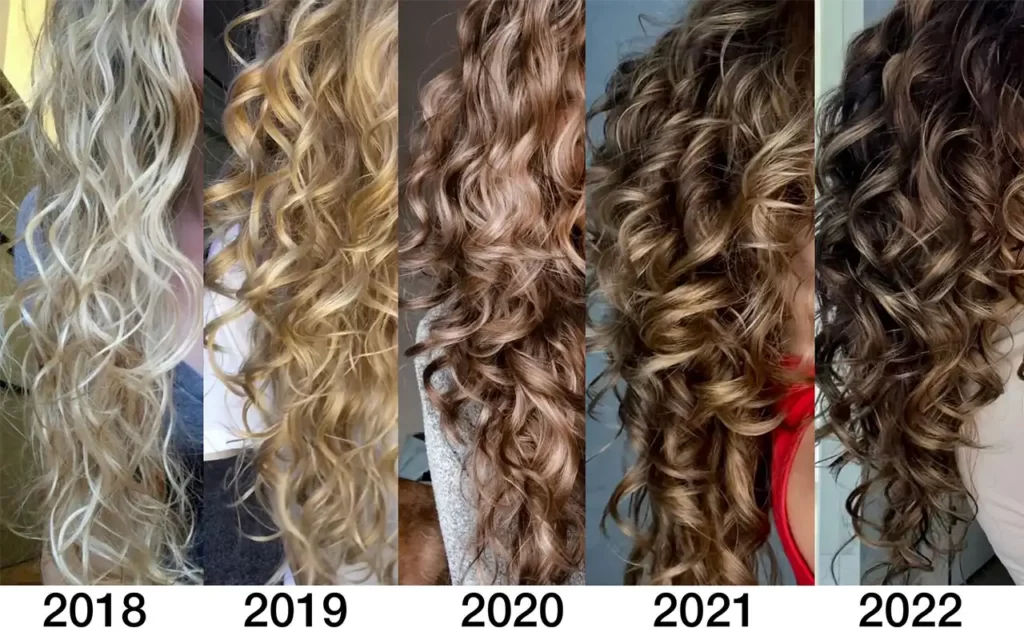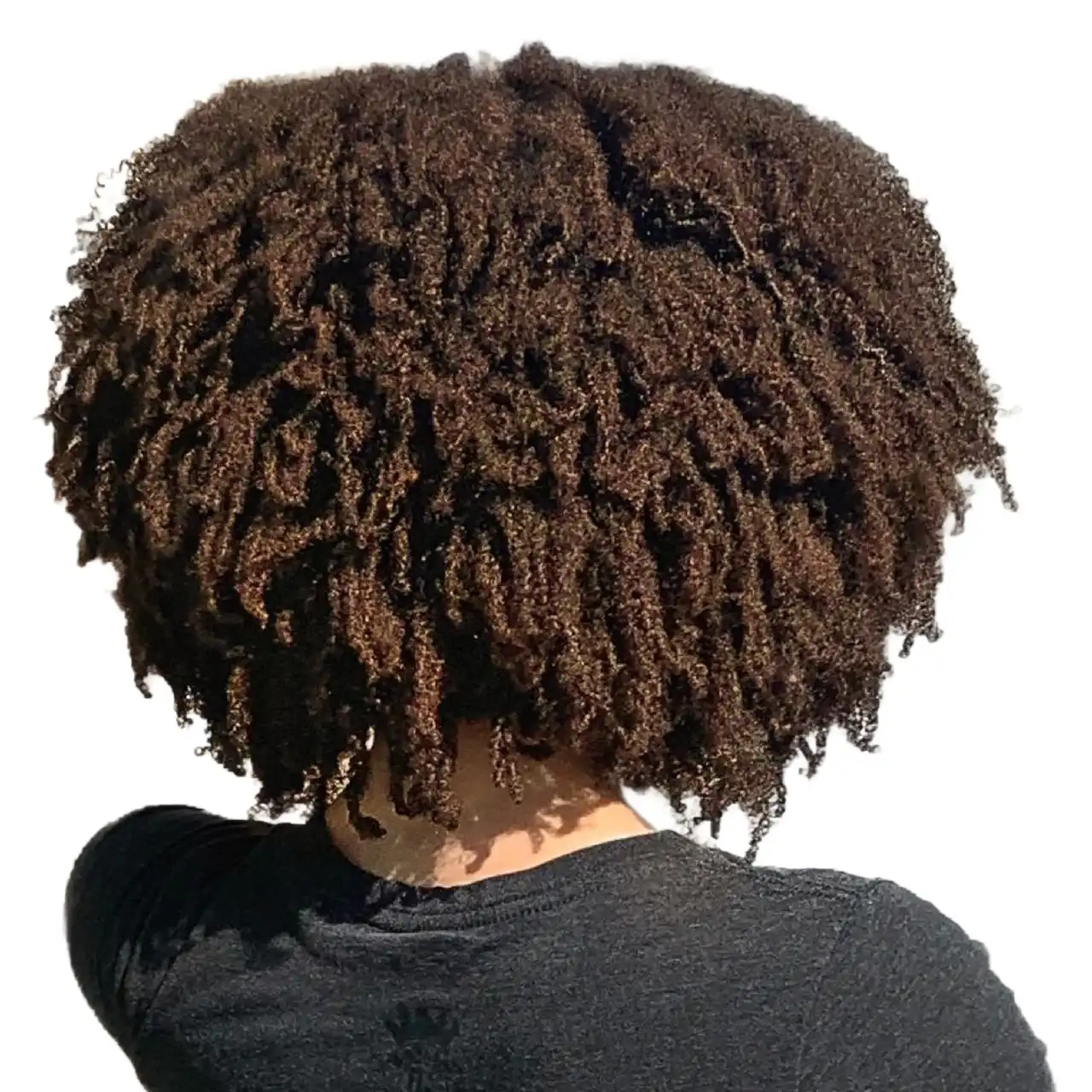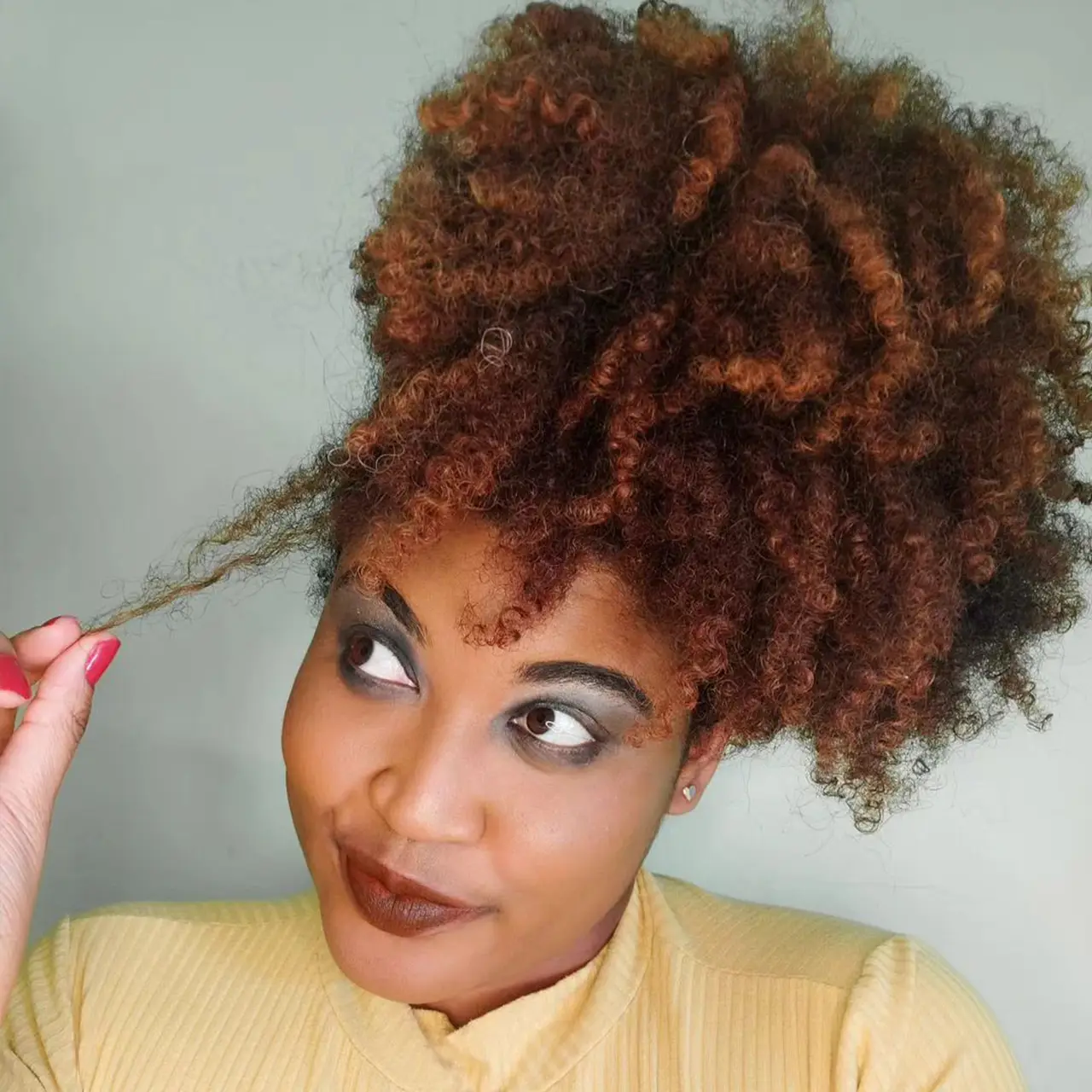Have you ever wondered why certain hair products work wonders for your friend but seem to leave your hair wanting more? The answer could lie in something called hair porosity. This often overlooked aspect of hair care is actually a game changer in understanding and nurturing your locks.

Hair porosity is all about your hair’s ability to absorb and retain moisture. It’s a crucial factor that influences how well products and treatments work with your hair. Think of it like a sponge – some sponges soak up water easily and hold onto it, while others barely absorb any water at all. Similarly, your hair’s porosity determines how it interacts with moisture and hair care products.
Knowing your hair’s porosity type is not just a fun fact; it’s essential for selecting the right products and establishing a hair care routine that truly benefits your unique hair type. Whether you’re struggling with dryness, frizz, or product buildup, understanding your hair’s porosity could be the key to unlocking the healthy, vibrant hair you’ve been aiming for.
In this blog, we’ll dive into the nitty-gritty of hair porosity. We’ll help you figure out your hair’s porosity level and guide you through choosing the most effective products and care strategies for your specific hair type. Let’s embark on this journey to healthier, happier hair together!
Part 1: The Basics of Hair Porosity
What is Hair Porosity?
Hair porosity refers to your hair’s ability to absorb and hold moisture. This characteristic is crucial because it largely determines how your hair interacts with water, oils, and hair care products. Imagine each strand of your hair as a tiny tube. The outer layer of this tube, known as the cuticle, can be tightly packed (low porosity), somewhat loose (medium porosity), or widely spaced (high porosity). These variations in cuticle arrangement affect how easily moisture can penetrate and stay within your hair.
How Does Porosity Affect Hair Care?
The porosity of your hair plays a significant role in its health and appearance. For instance, hair that struggles to absorb moisture often appears dry and may be more prone to damage. Conversely, hair that absorbs too much moisture quickly might become frizzy or feel weighed down. Knowing your hair’s porosity can help you choose the right products and techniques to maintain healthy, vibrant hair. It’s like picking the right key for a lock; the better the match, the better the results.
Types of Hair Porosity
- Low Porosity: Hair with low porosity has tightly bound cuticles, making it challenging for moisture to penetrate. This type of hair often takes longer to wet and dry, resists absorption of products, and is prone to product build-up.
- Medium Porosity: Considered the ‘ideal’ porosity, medium porosity hair has a looser cuticle layer that allows for an optimal balance of moisture absorption and retention. It is generally easier to manage and responds well to a variety of hair care products.
- High Porosity: This hair type has a more open cuticle structure, which easily absorbs moisture but also loses it quickly. High porosity hair can be a result of damage from chemical treatments or environmental factors and often feels dry, frizzy, and tangles easily.
Understanding your hair’s porosity is the first step towards a tailored hair care regimen that suits your unique needs. As we move forward, we’ll explore how to identify your hair’s porosity level and select products and methods that will help your hair thrive.
Part 2: Determining Your Hair Porosity
Identifying your hair’s porosity is crucial for understanding how to best care for it. Luckily, there are straightforward methods to test the porosity of your hair at home.
Common Porosity Testing Methods
- The Float Test: One of the most popular methods is the float test. To conduct this test, simply take a few strands of clean hair and place them in a bowl of water. Watch how your hair behaves in the water. If it floats, you likely have low porosity hair. If it sinks slowly, you might have medium porosity. And if it sinks immediately, your hair is probably high porosity.
- The Slip and Slide Test: Another method is the slip and slide test. Run your fingers up a strand of hair, towards your scalp. If your fingers move smoothly and the hair feels dense or hard, you likely have low porosity hair. If you feel slight bumps along the way, your hair is probably high porosity.
Effectiveness and Limitations of These Tests
While these tests can provide a general idea of your hair’s porosity, they are not foolproof. Various factors such as the cleanliness of your hair, the oiliness or product build-up, and even the water’s mineral content can influence the results. Moreover, hair porosity can vary across different parts of your head, making these tests even more unreliable.
Practical Tips for Identifying Hair Porosity
- Observe Your Hair’s Reaction to Products: Notice how your hair reacts to moisturizing products. If your hair takes a long time to absorb them or if products tend to sit on your hair, it’s likely low porosity. If your hair absorbs products quickly but also loses moisture fast, it might be high porosity.
- Pay Attention to Drying Time: After washing your hair, observe how long it takes to dry. Hair that takes a long time to dry is typically low porosity, whereas hair that dries quickly, especially at the roots, often indicates high porosity.
- Consult with a Professional: If you’re still unsure, consider consulting with a hair care professional. They can provide a more accurate assessment of your hair’s porosity and recommend appropriate care and products.
Understanding your hair’s porosity might take a bit of detective work, but it’s a crucial step in creating an effective hair care routine. As you become more familiar with your hair’s characteristics, you’ll be better equipped to choose products and methods that work best for you.
Part 3: Choosing the Right Products for Different Hair Porosity Types
Selecting the right hair care products based on your hair’s porosity can make a significant difference in maintaining its health and vibrancy. Here are some tailored recommendations for each hair porosity type:

For Low Porosity Hair
- Product Types: Opt for lightweight, protein-free products. Low porosity hair has tightly closed cuticles, which makes it difficult for heavy products to penetrate. Lightweight, water-based products are more effective as they can better moisturize without weighing the hair down.
- Product Recommendations:
- Leave-in Conditioners: Look for lightweight, hydrating leave-in conditioners.
- Oils: Lightweight oils like argan or jojoba oil are ideal as they won’t create buildup.
- Shampoos: Use clarifying shampoos to prevent buildup.
- Brands: Some recommended brands include SheaMoisture (specifically their Low Porosity line), Giovanni, and Kinky-Curly.
For Medium Porosity Hair
- General Care Advice: Medium porosity hair is often the easiest to manage. It requires a balanced approach – not too heavy on proteins but not solely focused on moisture either.
- Product Recommendations:
- Balanced Moisturizers: Products that provide a good balance of moisture and protein.
- Oils: Medium-chain oils like coconut or olive oil can be beneficial.
- Regular Maintenance: Regular deep conditioning treatments and occasional protein treatments can help maintain its health.
- Brands: Brands like Carol’s Daughter and Mielle Organics offer products that work well for medium porosity hair.
For High Porosity Hair
- Product Types: High porosity hair needs richer, more emollient products that are high in moisture content. This hair type benefits from heavier creams and butters that can help retain moisture and seal the cuticles.
- Product Recommendations:
- Deep Conditioners: Look for rich, deep conditioning treatments.
- Oils: Heavier oils like castor or avocado oil can help seal in moisture.
- Protein Treatments: Regular protein treatments can strengthen high porosity hair.
- Brands: Brands like DevaCurl and Ouidad have specific lines targeted at high porosity hair, offering products that provide deep hydration and repair.
Tips for All Hair Types:
- Regularly assess your hair’s condition as porosity can change over time due to factors like heat styling, chemical treatments, and environmental exposure.
- Experiment with different products and observe how your hair responds. What works for others might not work for you, and vice versa.
- Always read the ingredients list to ensure you’re using products that align with your hair’s needs.
Choosing the right products based on your hair’s porosity can greatly enhance your hair care routine, leading to healthier, more manageable hair.
Part 4: Care Tips and Strategies for Different Hair Porosity Types
Understanding your hair’s porosity is only the first step; implementing the right care strategies is key to maintaining healthy hair. Here are some tailored tips for each hair porosity level:
For Low Porosity Hair
- Use Heat Moderately: Warm water and moderate heat can help open up the cuticles, allowing better absorption of moisture. Consider using a warm towel or a steamer during deep conditioning treatments.
- Avoid Heavy Build-up: Since low porosity hair is prone to build-up, use light oils and avoid heavy butters. Also, clarify your hair regularly to remove any residue.
- Layering Products: Apply products in thin layers to ensure better absorption. The LOC (Liquid, Oil, Cream) method can be effective, but use lighter products for each step.
For Medium Porosity Hair
- Balanced Moisture and Protein: Maintain a healthy balance of moisture and protein. This hair type does not need as much protein as high porosity hair but can benefit from occasional protein treatments.
- Protect from Damage: Since medium porosity hair is in a relatively healthy state, focus on protective styling and minimizing heat and chemical treatments to maintain its porosity level.
- Regular Maintenance: Stick to a regular deep conditioning routine and use leave-in conditioners to keep your hair hydrated and healthy.
For High Porosity Hair
- Seal in Moisture: Use heavier creams and butters to lock in moisture. Layering products using the LCO (Liquid, Cream, Oil) method can be beneficial, with oil being the final layer to seal everything in.
- Use Protein Treatments: Incorporate regular protein treatments to strengthen the hair and reduce breakage. Be careful not to overdo it, as too much protein can make hair brittle.
- Avoid Harsh Treatments: Minimize the use of heat and harsh chemicals. High porosity hair is often more vulnerable to damage, so gentle care is crucial.
Additional Tips for All Hair Types
- Regular Trims: Regardless of porosity, regular trims are essential to keep your hair healthy and prevent split ends.
- Gentle Detangling: Always detangle gently using a wide-tooth comb or your fingers to minimize breakage.
- Listen to Your Hair: Your hair’s needs can change over time. Pay attention to how it responds to different products and treatments, and adjust your routine accordingly.
Implementing these porosity-specific tips into your hair care routine can significantly improve the health and appearance of your hair. Remember, patience and consistency are key – it might take some time to see changes, but your hair will thank you in the long run!
Conclusion: Embracing Your Hair’s Unique Journey
As we’ve explored throughout this blog, understanding hair porosity is more than just a piece of hair trivia – it’s a fundamental aspect of achieving and maintaining healthy hair. Recognizing whether your hair has low, medium, or high porosity can guide you in selecting the most effective products and care strategies, ensuring that your hair care routine is as personalized and effective as possible.
Remember, the path to optimal hair health is not one-size-fits-all. It’s a personal journey that involves experimentation and learning. Don’t be afraid to try different products and techniques to discover what works best for your hair. While this process can involve some trial and error, it’s also an opportunity to get to know your hair better.
We encourage you to view your hair care routine as an evolving process. As your hair changes – whether due to environmental factors, aging, styling, or treatments – its needs will also change. Stay attentive and responsive to these changes. What works for your hair now might need to be adjusted in the future.
Ultimately, the goal is to embrace your hair’s unique characteristics and needs. Whether your hair absorbs moisture like a sponge or repels it like a shield, there’s beauty and uniqueness in every type. With the right knowledge and tools at your disposal, you can unlock the full potential of your hair, keeping it healthy, happy, and radiant.
So go ahead, experiment, adjust, and most importantly, enjoy the journey of discovering the best ways to care for your hair. After all, when you listen to your hair and give it what it needs, it will surely show its gratitude through its luster, strength, and vitality.



